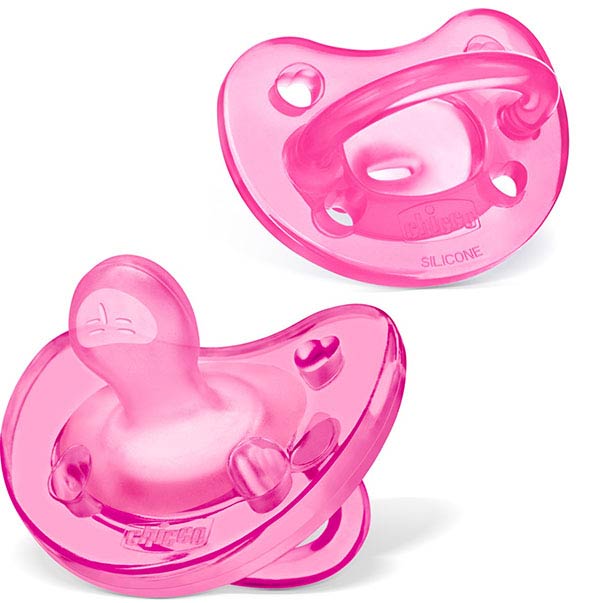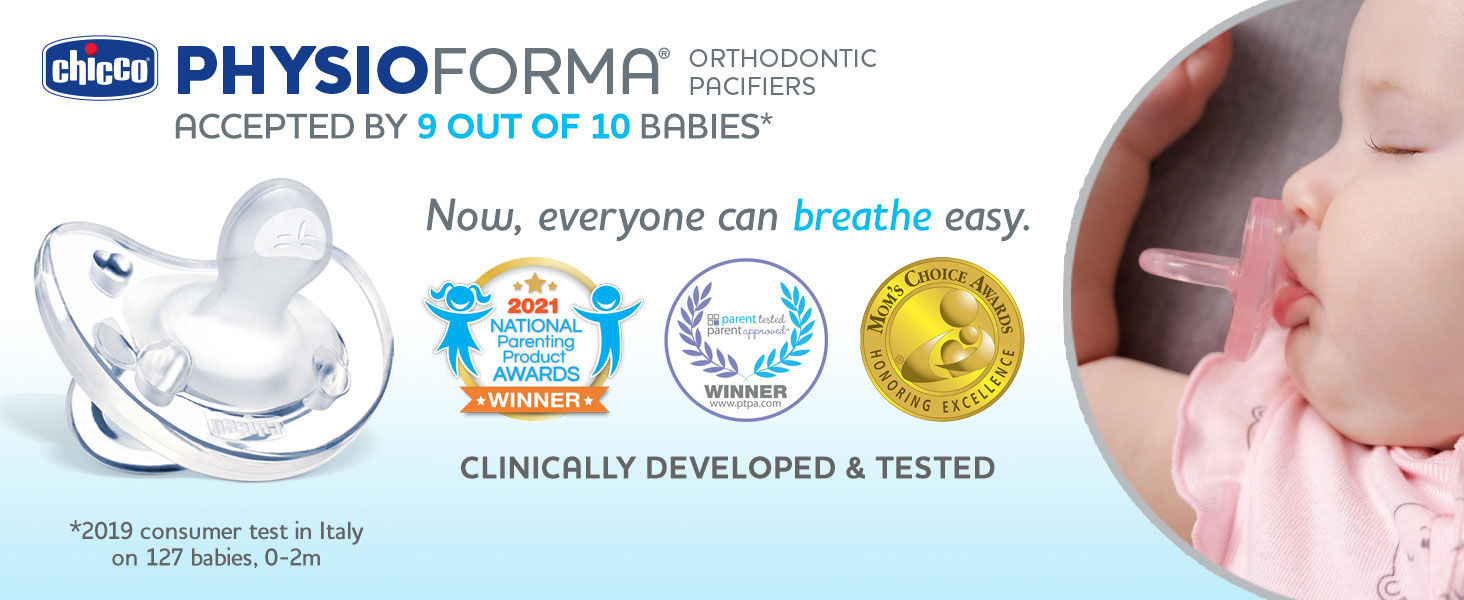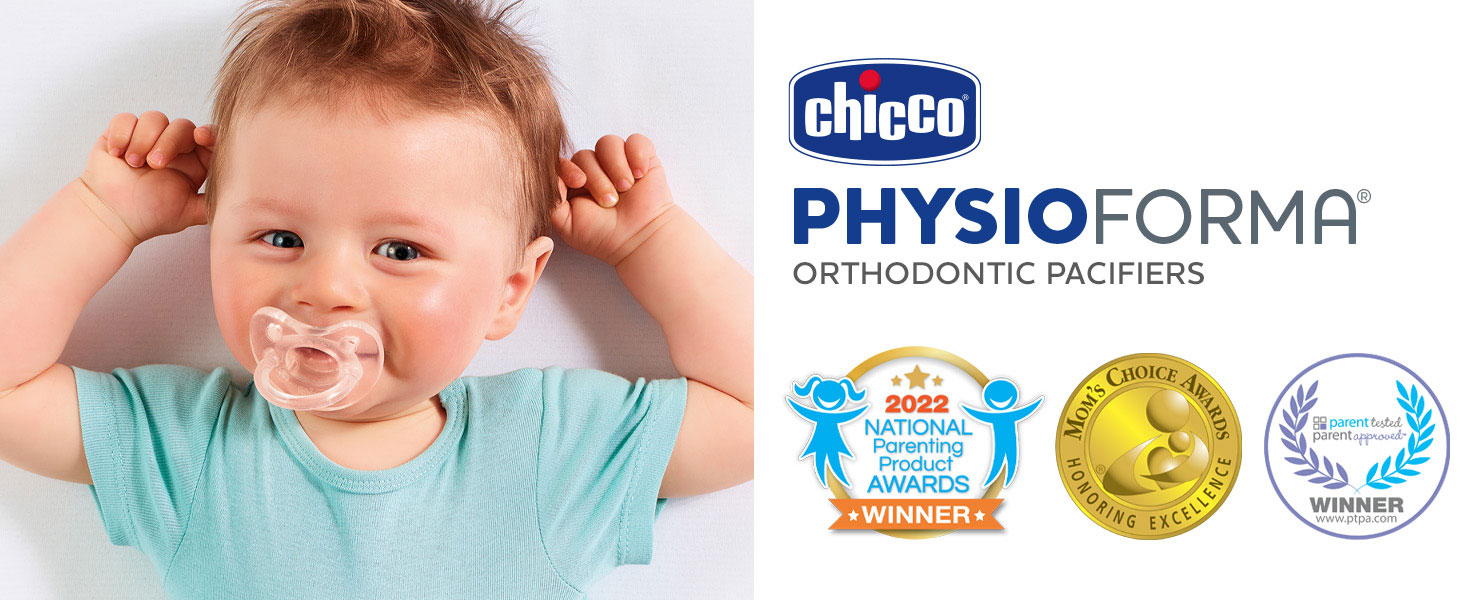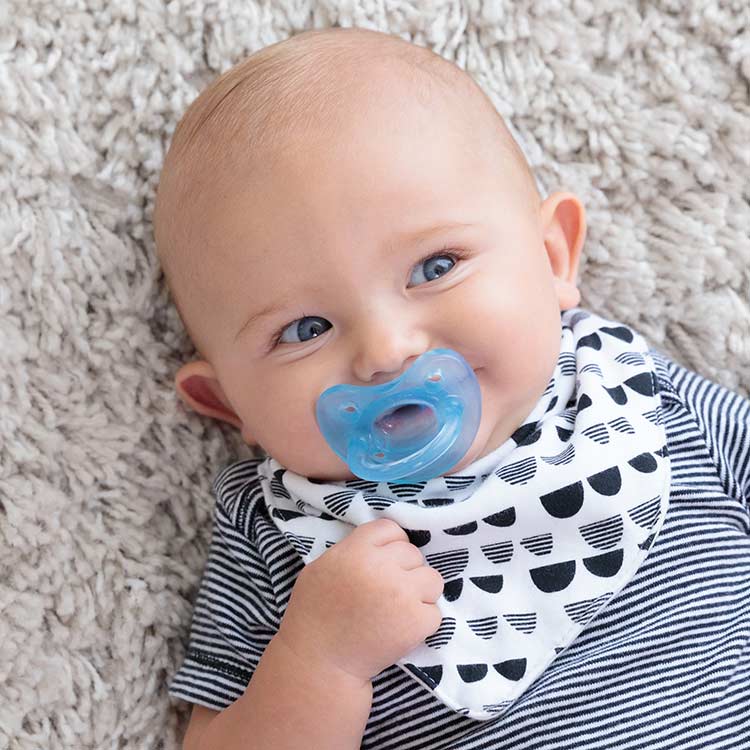Pacifier Pros and Cons
Not all pacifiers are created equal, and parents should be aware of the pros and cons to using a pacifier before introducing one.
Pacifier Pros:
- Helps to encourage a bedtime routine
- Helps reduce the risk of Sudden Infant Death Syndrome (SIDS)
- Satisfies the sucking reflex in newborns
- Compact size for traveling
- Encourages self-soothing skills
- Helps with pain relief
- Pacifiers can be tossed away when time for weaning vs. a thumb
- Orthodontic designs support the shape of the baby’s palate and jaw
Pacifier Cons:
- Some babies reject pacifiers altogether
- Nipple confusion may occur if the pacifier is introduced before breastfeeding is established
- Long-term pacifier use, especially with non-orthodontic designs, can lead to open bite, palate and dental issues
- An increased risk of ear infections, especially in older children

If you’re planning to breastfeed, pay close attention to pacifier use. Pacifiers are a great way to end feeding sessions and transition to bed time when introduced correctly.
When the baby continues to suckle after feeding, offer the pacifier as an alternative to encourage your little one to relax without more feeding. Introducing a pacifier at the right time during development can encourage babies to self-soothe and become more regular with a routine.
This is why pacifiers are an excellent way to encourage bedtime routines, but should be introduced after the baby is at least 1 month old if the baby is breastfeeding to avoid nipple confusion.
Pacifiers should not be given just because the baby is fussing. You should always try to find out the reason for fussing first, and if they are dry and well fed, then offer a pacifier.
Choosing the Right Pacifier
When choosing a pacifier for your infant, take into consideration your pediatrician’s recommendations and your baby’s preferences for soothing.
The PhysioForma Soft Silicone Pacifier is designed according to guidelines set by the American Academy of Pediatrics and was developed with an advisory panel of leading neonatologists, pediatricians and orthodontists.
The most unique feature of the PhysioForma pacifier is that it helps to support your baby’s physiological breathing. This is possible with a unique nipple shape which positions the baby's tongue forward to help maintain an open airway.

The pacifier was accepted by 9 out of 10 babies in clinical trials. For babies that struggle to accept a pacifier, PhysioForma could be the perfect fit. Remember that it can take several times trying a paci before the baby accepts it.
When browsing pacifiers, you’ll notice there are generally two nipple shapes: rounded and orthodontic. While rounded pacifiers can sometimes be easier for newborn babies to take, orthodontic pacifiers offer a shape that is specifically designed to support the shape of a baby’s naturally developing palate and jaw. During sucking, orthodontic pacifiers flatten in the baby's mouth more like mother’s nipple during breastfeeding to provide a natural sucking action and reduce pressure on the gums and developing teeth.
The PhysioForma pacifier is the best of both worlds with its unique orthodontic design that babies can easily adapt to.
Have you tried Chicco’s PhysioForma pacifier? Browse your options in clear, pink and teal. Order one now to start enjoying an even better night’s sleep.


